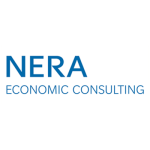This article describes the challenges that the digital transformation of the economy poses for transfer pricing. In the next article of the series, it will show how these interdependencies can be translated into new transfer pricing models.
The digital revolution has changed how companies operate. Vastly increased information flows have enabled companies to access data previously unattainable as information is gathered directly from customer interactions or sensors.
From a transfer pricing perspective, one of the most important changes stems from increased feedback mechanisms: value chains become value networks as information is gathered and dispersed from different interaction points. This is then processed and used in many departments and companies for immensely different purposes. This makes it more difficult to separate the value creation of the individual group companies, especially due to the synergies created between the intangibles.
We encountered an example of these effects in the agrochemical industry. A producer of herbicides expanded its relatively traditional business into new digital offerings. The group already had well-known brands, production expertise, and customer relationships with farmers around the globe. However, the group is now starting to offer field management software that allows farmers to estimate yields to plan and target the use of the herbicides more efficiently. In addition, there are plans to potentially use automated drones for various monitoring and tending processes in fields.
All these activities are driven by different entities within the group and are highly intertwined. The software is developed by a new start-up within the group, which relies on the R&D experience by the group's laboratories, and is advertised to the farmers by the sales entities using local client relationships and the global brand.
On the other hand, the software sends back information to the groups data centers where it is then processed and structured by some of the group's data scientists and then used by both the R&D centers to improve the core products as well as by the sales entities to better target their campaigns. The software start-up development entity in the group also uses customer feedback to improve the software. While there are some direct revenues created from the licensing of the software to farmers, much of the value creation happens in this network of effects.
As can be seen from this example, it is not only that new intangibles are created, but that intangibles are increasingly interlinked and influencing each other. For transfer pricing, this is a particular challenge, as it becomes more difficult to pinpoint the exact impact of one company within this value network and its appropriate remuneration. While many companies contribute to the business success, it is obvious that these contributions are very different, both in nature and likely in value.
The OECD has published guidelines that prescribe that the creation and impact of intangibles must be analysed in greater detail regarding their development, enhancement, maintenance, protection and exploitation (DEMPE), and the entities involved in these steps.
In this case, it could be seen that this poses a particular challenge for digital business models as the DEMPE process is not linear at all, and involves not just activities, but also intangibles that are contributing to (and benefiting from) other intangibles. Therefore, we need to interrelate these intangibles and DEMPE contributions and their economic impacts in detail by mapping and explaining their relations.
New transfer pricing systems will need to reflect these trends and fairly reflect the joint value creation to digital business models. Due to the high complexity and unforeseeable operating results, standard transfer pricing methods with guaranteed fixed margins will lose their usefulness. Our next article will show how transfer pricing methods could be applied in the context of the digital transformation.













